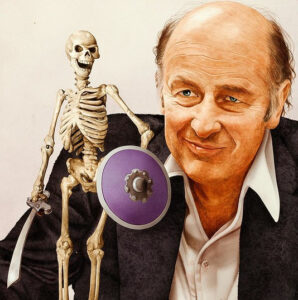
Michael Shanks has recently blogged about Ray Harryhausen and his stop-motion animation (Shanks 2020), sparked by an exhibition at the Scottish National Gallery of Modern Art (currently shut as a result of coronavirus restrictions). Harryhausen’s work proved inspirational to many film directors over the years, but might his technique also be inspirational for archaeological visualisation?
For example, Shanks draws a sharp distinction between the stop motion creations of Harryhausen and computer-generated imagery in the way that the technique of stop motion animation never quite disappears into the background which is part of both its charm and effect, unlike the emphasis on photorealistic models in CGI.
In CGI the objective is often to have the imagery fabricated by the computer blend in so one doesn’t notice where the fabrication begins or ends. The rhetorical purpose of CGI is to fool, to deceive. Harryhausen’s models don’t look “real”. More precisely, they don’t look “natural”. No one need be fooled. One admires the craft in their making. (Shanks 2020)


